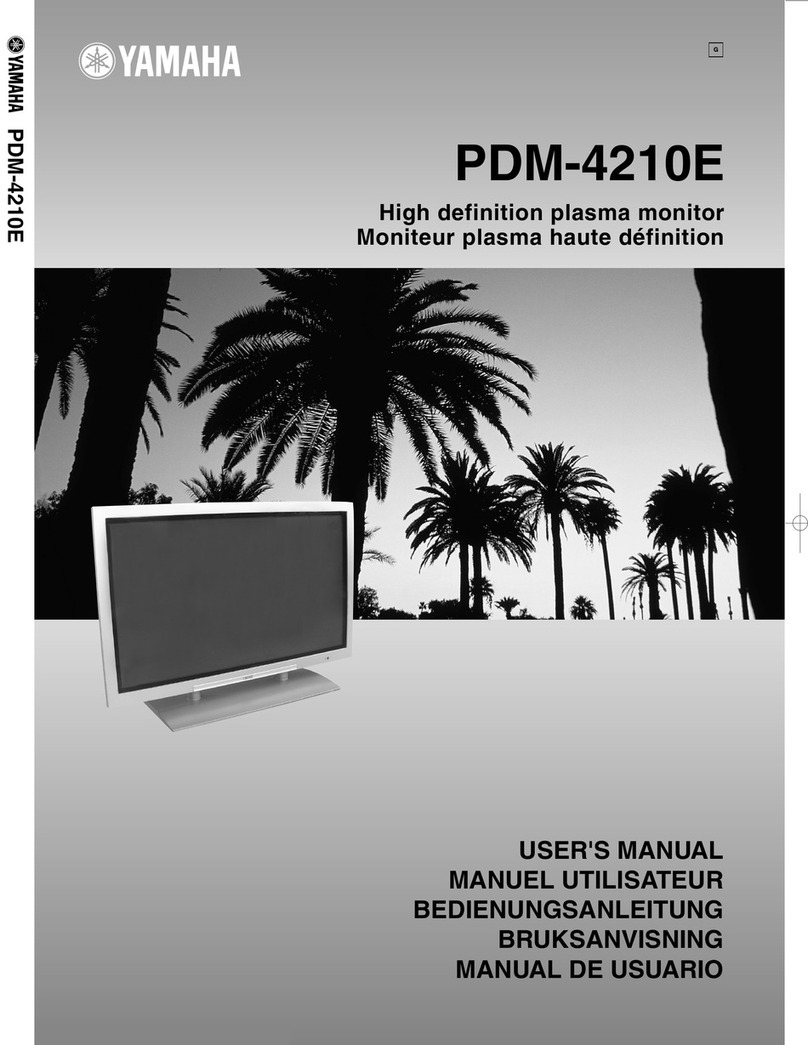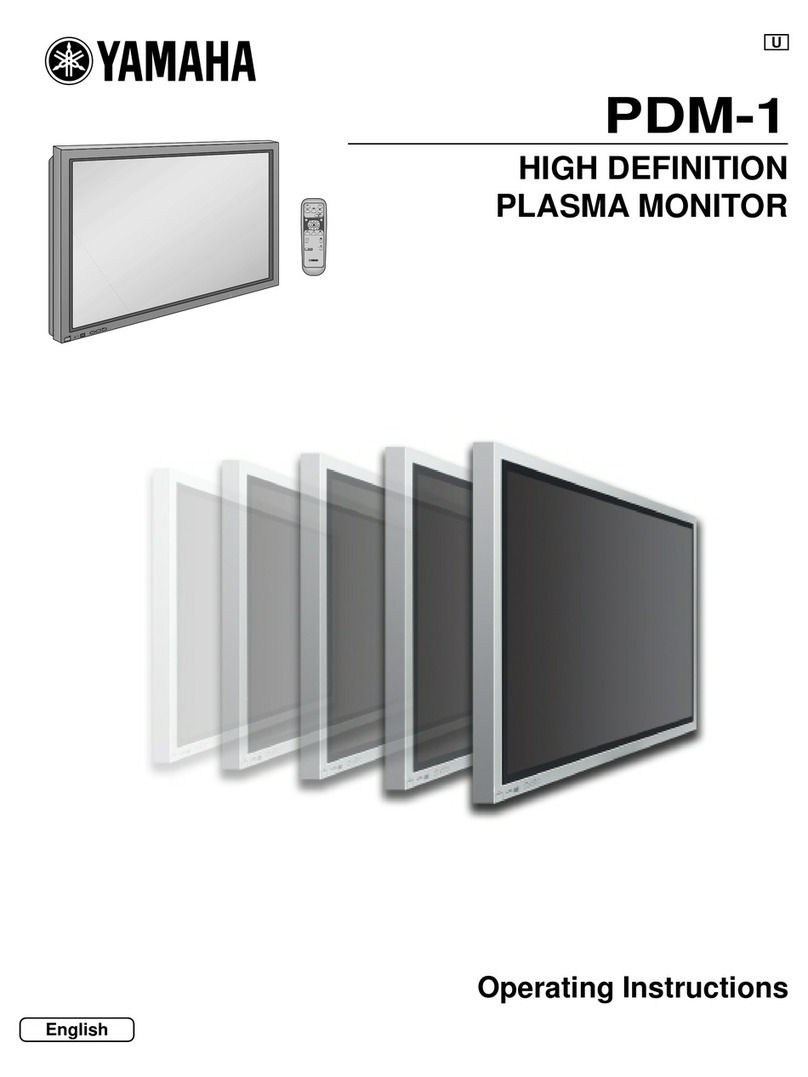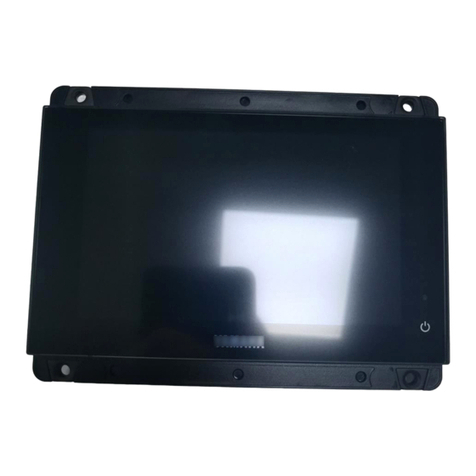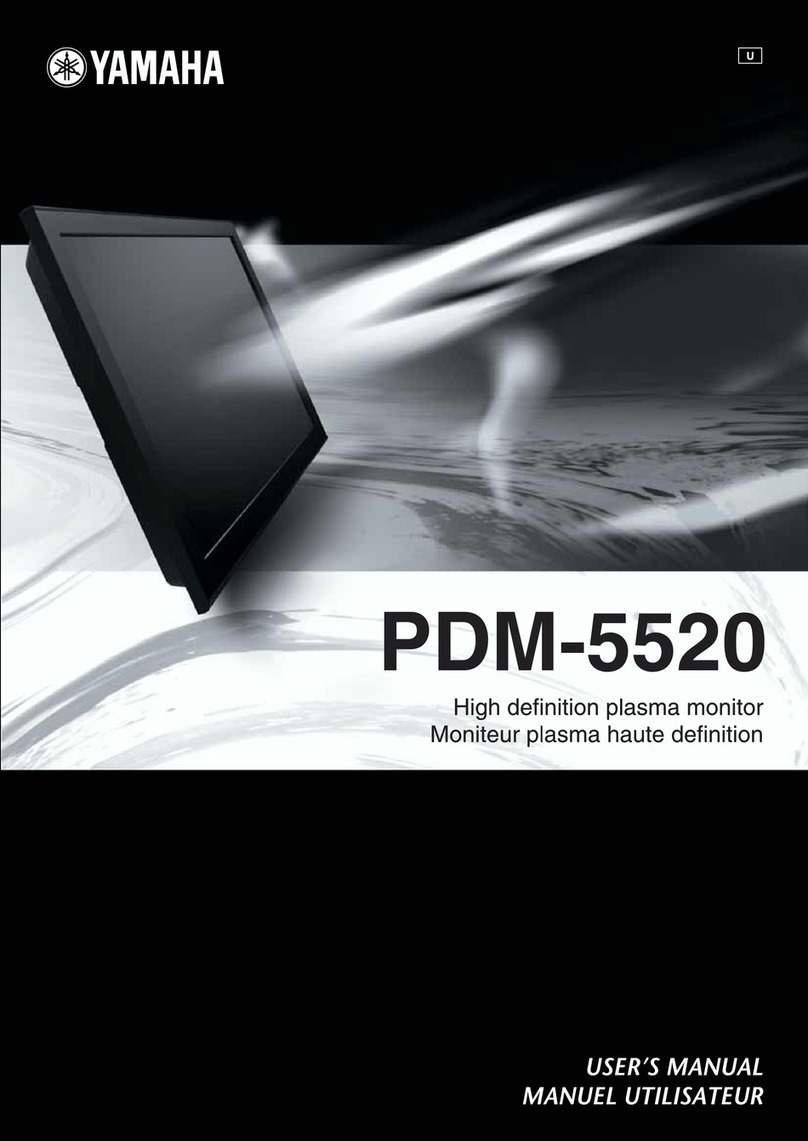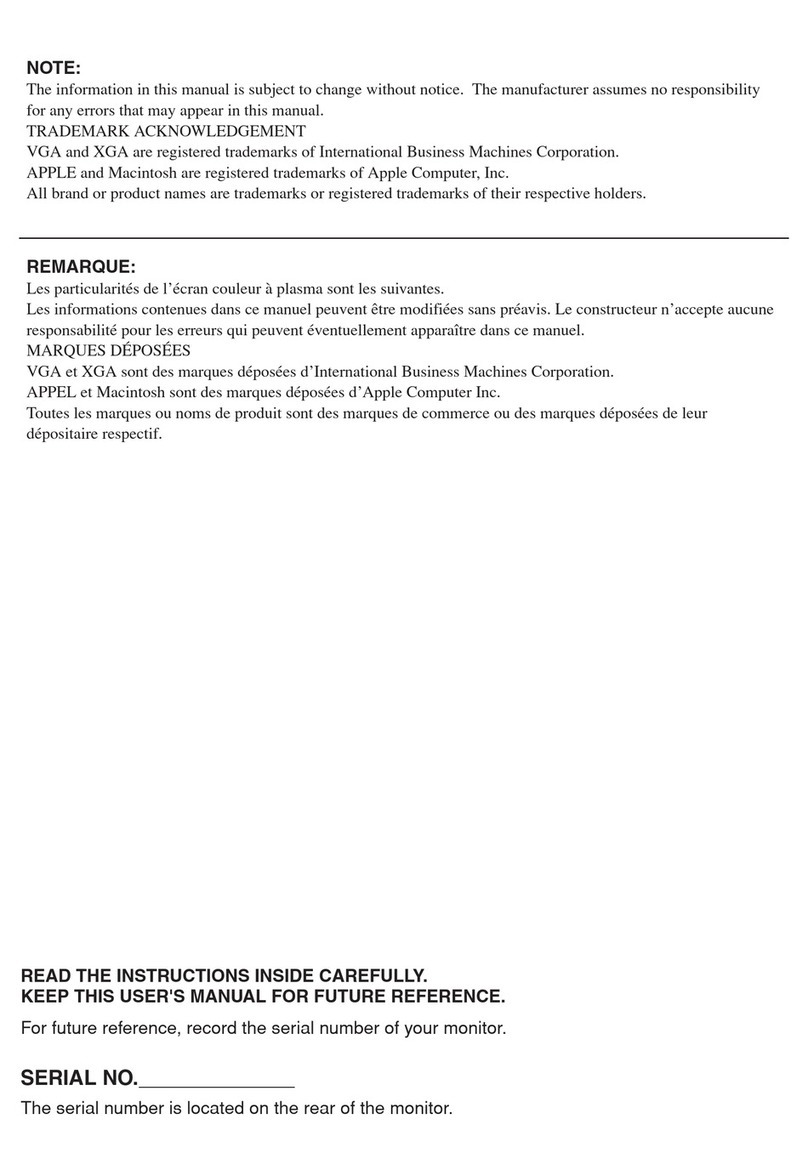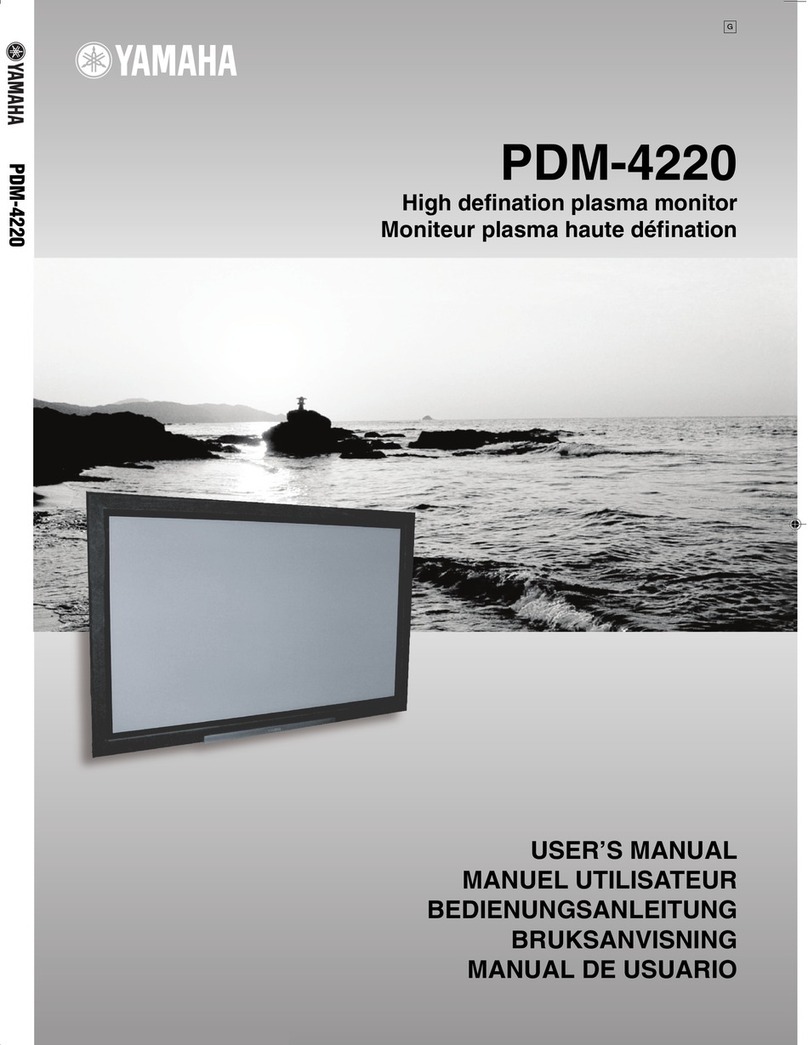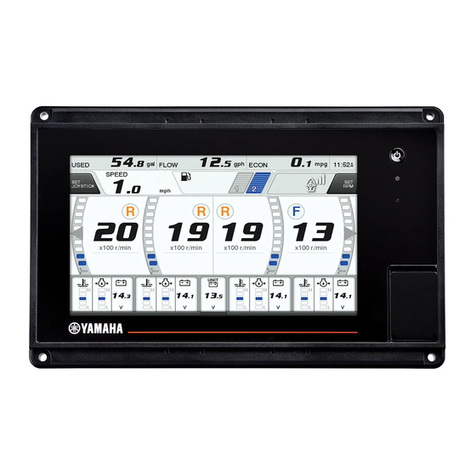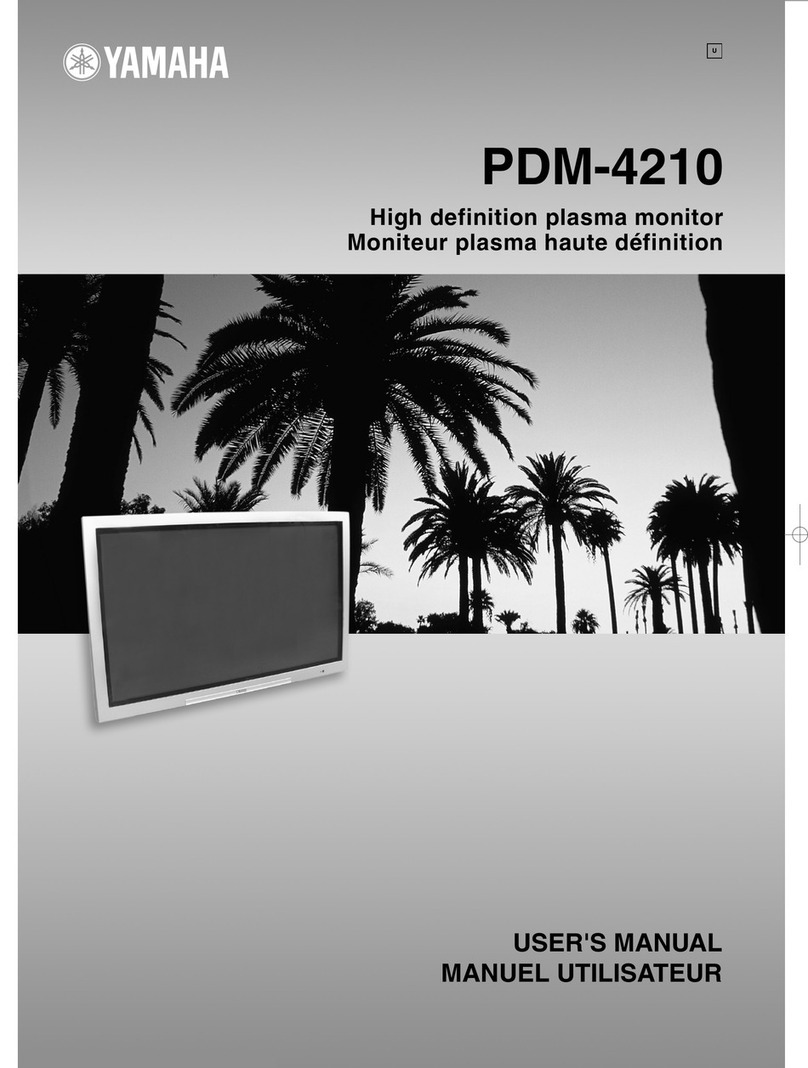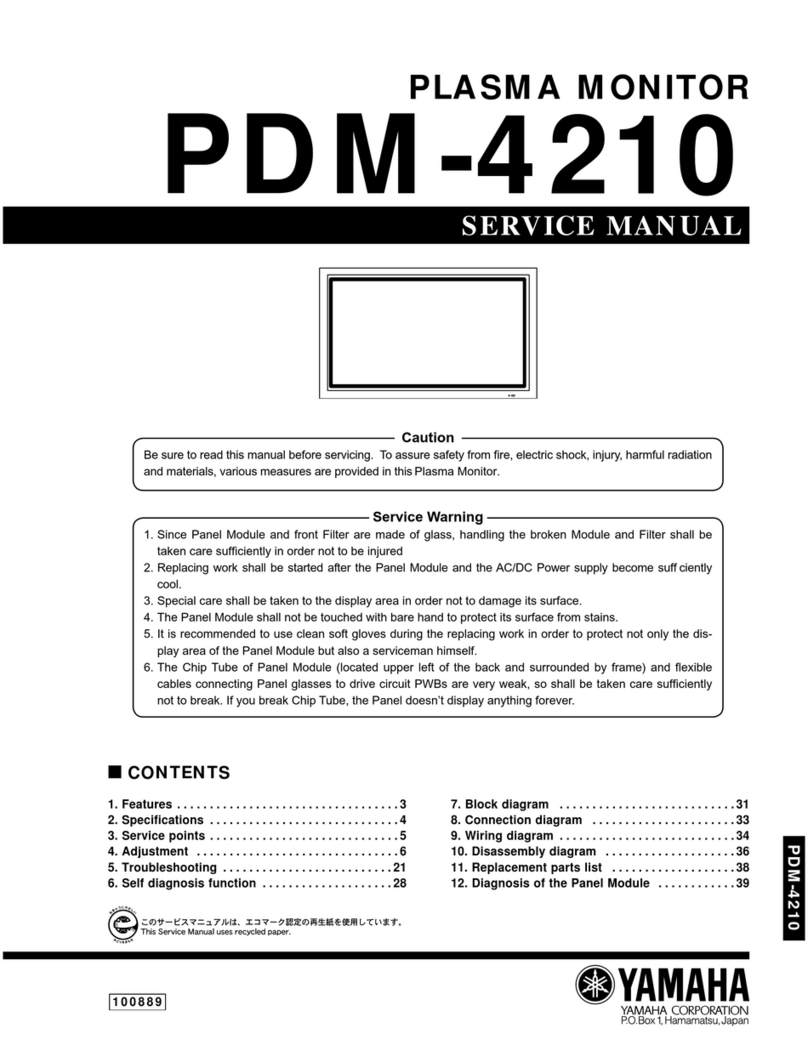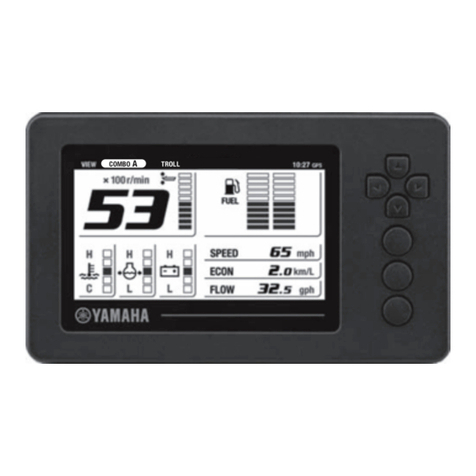
1 YAMAHA PDM-1 Series Overall View 4
2 Specifications 5
3 Applicable signals 6
4 Safety Precautions 7
4.1. General Guidelines 7
5 Prevention of Electro Static Discharge (ESD) to
Electrostatically Sensitive (ES) Devices 8
6 About lead free solder (PbF) 9
7 PCB Structure sheet of GPH5D2 chassis 10
8 Service Hint 11
9 Location of Lead Wiring 12
10 Adjustment Procedure 13
10.1. +B Set-up 13
10.2. Driver Set-up 13
10.3. Initialization Pulse Adjust 14
10.4. P.C.B. (Printed Circuit Board) exchange 15
10.5. Adjustment Volume Location 15
10.6. Test Point Location 15
11 Service mode 16
11.1. CAT (computer Aided Test) mode 16
11.2. IIC mode structure (The following data is only one
example.) 18
12 Alignment 19
12.1. Pedestal setting 19
12.2. NTSC panel white balance 20
12.3. PAL/SECAM panel white balance 21
12.4. PC/RGB panel white balance 23
12.5. HD/ 525i /525p panel white balance 25
12.6. 625i panel balance 27
12.7. Sub brightness setting 28
13 Trouble shooting guide 30
13.1. Self Check 30
13.2. No Power 31
13.3. No Picture 32
13.4. Local screen failure 32
14 Option Setting 33
15 Conductor Views 35
15.1. F-Board 35
15.2. P1-Board 36
15.3. P3, P5, P6, P7 and P8-Board 39
15.4. HX-Board 41
15.5. HZ-Board 42
15.6. D1-Board 44
15.7. D2-Board 46
15.8. C1-Board 49
15.9. C2-Board 50
15.10. C3-Board 51
15.11. C4-Board 52
15.12. C5-Board 53
15.13. C6-Board 54
15.14. C9-Board 55
15.15. SC-Board 56
15.16. SU-Board 59
15.17. SD-Board 60
15.18. SS-Board 61
15.19. SS2 and SS3-Board 64
15.20. Z-Board 65
15.21. H3, S1 and V1-Board 66
16 Block and Schematic Diagrams 67
16.1. Schematic Diagram Notes 67
16.2. Main Block Diagram 68
16.3. Power Block Diagram 69
16.4. P1-Board Schematic Diagram 70
16.5. F, P3, P5, P6, P7 and P8-Board Schematic Diagram 71
16.6. HX-Board Block Diagram 72
16.7. HX-Board Schematic Diagram 73
16.8. HZ-Board Block Diagram 74
16.9. HZ-Board (1 of 2) Schematic Diagram 75
16.10. HZ-Board (2 of 2) Schematic Diagram 76
16.11. D1-Board Block Diagram 77
16.12. D1-Board (1 of 6) Schematic Diagram 78
16.13. D1-Board (2 of 6) Schematic Diagram 79
16.14. D1-Board (3 of 6) Schematic Diagram 80
16.15. D1-Board (4 of 6) Schematic Diagram 81
16.16. D1-Board (5 of 6) Schematic Diagram 82
16.17. D1-Board (6 of 6) Schematic Diagram 83
16.18. D2-Board Block Diagram 84
16.19. D2-Board (1 of 8) Schematic Diagram 85
16.20. D2-Board (2 of 8) Schematic Diagram 86
16.21. D2-Board (3 of 8) Schematic Diagram 87
16.22. D2-Board (4 of 8) Schematic Diagram 88
16.23. D2-Board (5 of 8) Schematic Diagram 89
16.24. D2-Board (6 of 8) Schematic Diagram 90
16.25. D2-Board (7 of 8) Schematic Diagram 91
16.26. D2-Board (8 of 8) Schematic Diagram 92
16.27. C1, C2, C3, C4, C5, C6 and C9-Board (1 of 2) Block
Diagram 93
16.28. C1, C2, C3, C4, C5, C6 and C9-Board (2 of 2) Block
Diagram 94
16.29. C1-Board Schematic Diagram 95
16.30. C2-Board Schematic Diagram 96
16.31. C3-Board Schematic Diagram 97
CONTENTS Page Page
2
PDM-1U/G/R/
